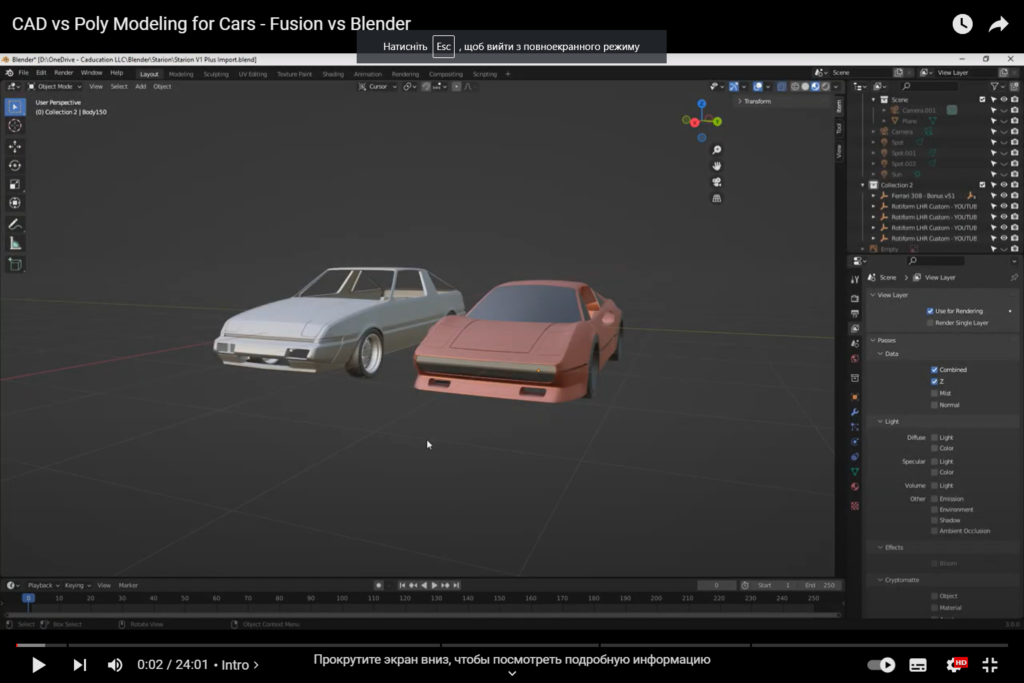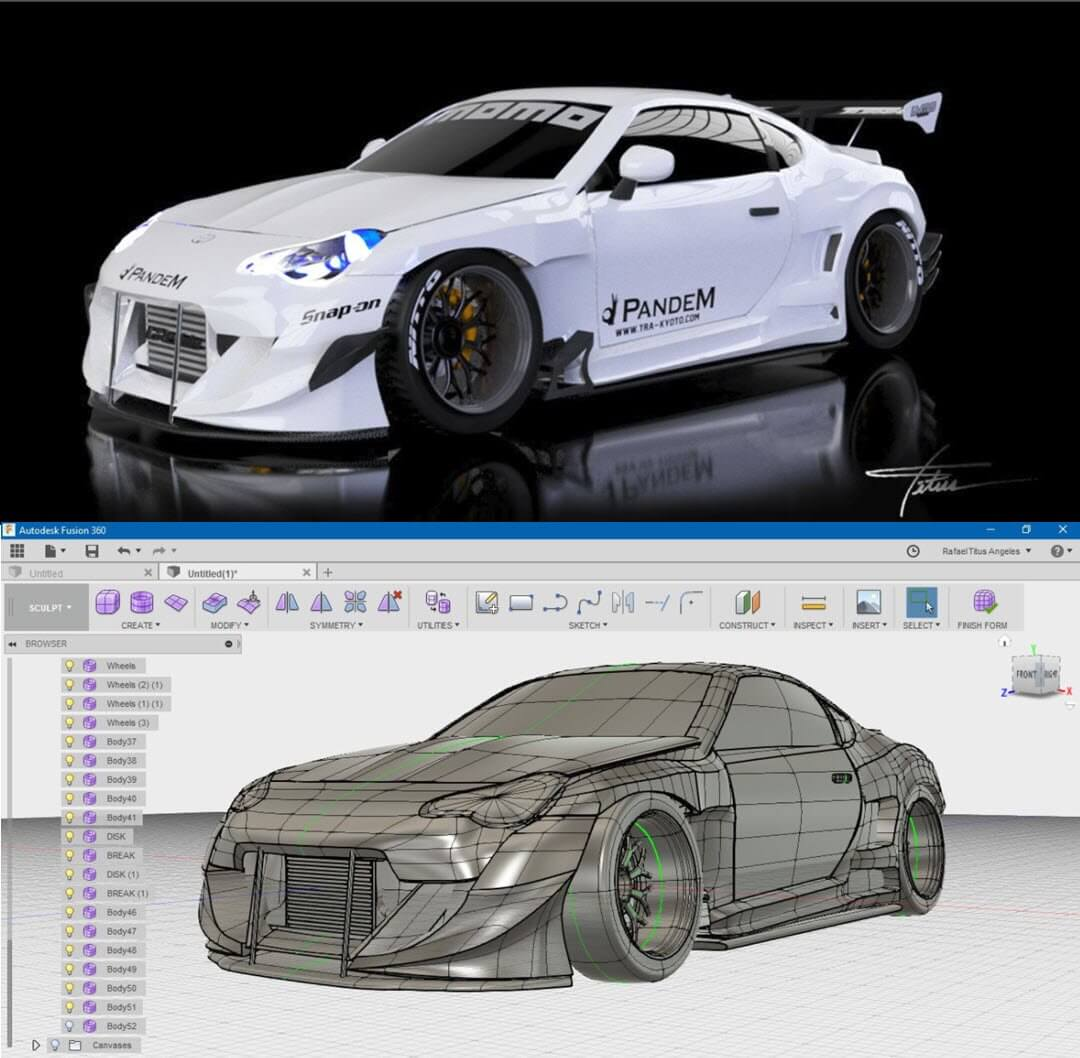In the ever-evolving world of design and engineering, two technologies stand out: Computer-Aided Design (CAD) and 3D Modeling. Both play a crucial role in various industries, revolutionizing how products are conceptualized, developed, and brought to life.
CAD: The Backbone of Engineering
Computer-Aided Design, popularly known as CAD, has been a game-changer in the field of engineering. It provides designers and engineers with powerful tools to create, modify, and optimize designs with precision. CAD software offers an array of functionalities, including 2D and 3D drafting, parametric modeling, rendering, and simulation. Its ability to work with complex geometries and precise measurements has made it indispensable in industries like architecture, aerospace, automotive, and manufacturing.
Applications of CAD
CAD finds extensive use across various industries, and its applications continue to grow rapidly:
- Architecture: Architects leverage CAD to create detailed building plans, visualize structures, and analyze various design aspects;
- Engineering: CAD is the go-to tool for engineers to design mechanical components, electrical circuits, and intricate systems;
- Product Design: From consumer electronics to industrial machinery, CAD enables product designers to bring ideas to life;
- Manufacturing: CAD plays a crucial role in the manufacturing process, optimizing production and reducing costs.
Advantages of CAD
CAD brings numerous advantages to the table, making it an invaluable asset for designers and engineers:
- Precision and Accuracy: CAD allows designers to work with precise measurements, reducing errors and ensuring high-quality outputs;
- Efficiency and Productivity: With CAD, design iterations can be done swiftly, saving time and boosting productivity;
- Collaboration and Documentation: CAD facilitates seamless collaboration among teams and provides comprehensive design documentation.
3D Modeling: Shaping Imagination
3D Modeling has taken design and visualization to new heights by enabling the creation of realistic 3D representations of objects, scenes, and characters. Artists, animators, and designers across various industries rely on 3D modeling software to craft stunning visuals, characters, and animations that push the boundaries of creativity.
Applications of 3D Modeling
The applications of 3D modeling are vast and continue to expand, crossing into fields like:
- Entertainment: 3D modeling gives life to characters and worlds in movies, video games, and virtual reality experiences;
- Medical Visualization: It aids in visualizing complex anatomical structures and assisting medical professionals in diagnosis and treatment planning;
- Archaeology and Heritage Preservation: 3D modeling helps in recreating ancient artifacts and historical sites for preservation and study;
- Education: 3D models enhance the learning experience by making complex subjects more tangible and engaging.
Advantages of 3D Modeling
The advantages of 3D modeling are compelling, making it a go-to tool for designers and artists:
- Realism and Visualization: 3D modeling allows artists to create lifelike representations that enhance visual storytelling;
- Creativity and Versatility: Artists can explore their creativity and experiment with various styles and designs;
- Interactive Presentations: 3D models facilitate interactive presentations, making it easier to convey ideas and concepts.
CAD vs. 3D Modeling: A Comparative Analysis
Let’s now delve into a detailed comparison of CAD and 3D modeling, assessing their strengths, weaknesses, and the scenarios in which each excels.
Complexity and Learning Curve
| Aspect | CAD | 3D Modeling |
|---|---|---|
| Complexity | High | Moderate |
| Learning Curve | Steeper | Easier |
| Explanation | CAD software requires substantial training and experience due to its vast array of tools and features. Users need to understand engineering principles and design standards. | 3D modeling software is generally more user-friendly, allowing artists and designers to get started quickly. While mastering advanced techniques may take time, beginners can achieve satisfactory results with basic knowledge. |
CAD, with its complex toolset and engineering-oriented approach, demands a steeper learning curve. It caters to professionals who require in-depth technical expertise and precision in their designs. On the other hand, 3D modeling software prioritizes creative freedom and ease of use, making it accessible to a broader audience.
Use Cases and Industries
| Aspect | CAD | 3D Modeling |
|---|---|---|
| Dominant Industries | Engineering, Architecture, Product Design, Manufacturing | Entertainment, Film, Gaming, Medical Visualization, Education |
| Explanation | CAD excels in industries where precise measurements, engineering standards, and material specifications are critical. It serves as the backbone of product development and manufacturing processes. | 3D modeling finds its stronghold in industries that prioritize visual aesthetics and creativity. It fuels artistic endeavors in movies, games, and medical visualizations, among others. |
CAD dominates in industries where technical accuracy is paramount, while 3D modeling thrives in creative fields that demand artistic expression and visual storytelling.
Design Complexity and Visualization
| Aspect | CAD | 3D Modeling |
|---|---|---|
| Design Complexity | Well-suited for complex geometries and detailed engineering designs. | Ideal for organic shapes, characters, and visually appealing objects. |
| Visualization | Offers detailed technical visualization, suitable for design analysis and prototyping. | Provides realistic and visually stunning renderings, allowing artists to create captivating scenes and characters. |
CAD’s strength lies in handling complex geometries and creating precise technical visualizations. Meanwhile, 3D modeling excels in crafting visually striking, realistic representations that captivate audiences.

The Future of Design: A Symbiotic Approach
As we explore the realm of design and engineering, it becomes evident that both CAD and 3D modeling have unique strengths that cater to different needs. The future of design lies in embracing a symbiotic approach, where these technologies complement each other to unleash boundless creativity and efficiency.
Whether you seek to engineer intricate components or bring fantastical worlds to life, CAD and 3D modeling remain indispensable tools in the arsenal of designers and artists.
Conclusion
In conclusion, CAD and 3D modeling are powerful technologies that have revolutionized the world of design and engineering. CAD’s precision and technical prowess cater to industries with strict standards, while 3D modeling’s creative freedom fuels artistic expressions and immersive experiences.
The best approach is to recognize the strengths of both technologies and leverage them in synergy. Whether you are an engineer aiming for precise designs or an artist unleashing creativity, CAD and 3D modeling will continue to shape the future of design and redefine the boundaries of human imagination.
